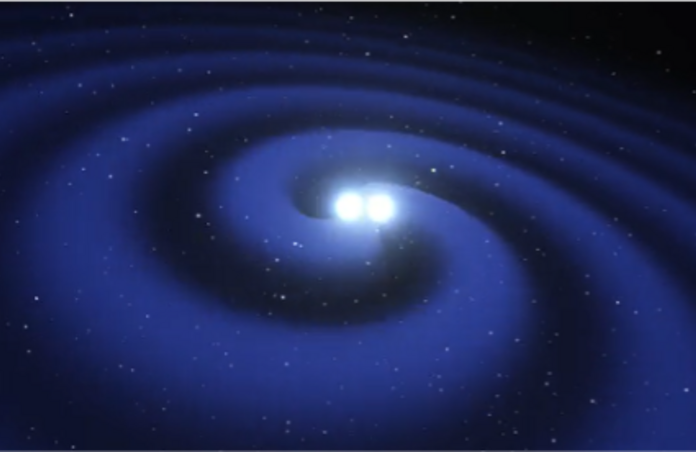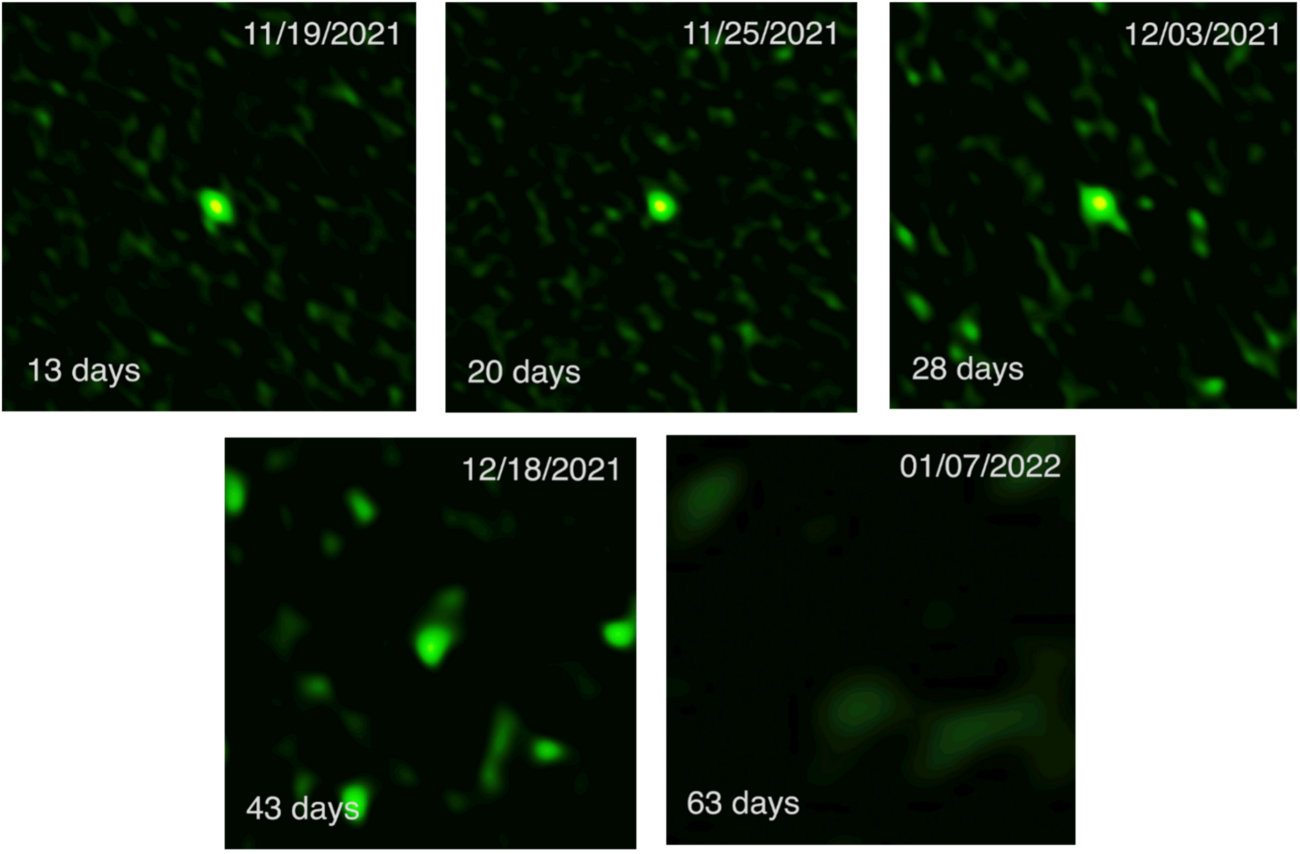Neutron Star Merger Observed in Millimetre Wavelengths

In early August, Tanmoy Laskar et al submitted a paper documenting their observation of the gamma ray burst event, SGRB 211106A. This event occurred in an extremely distant galaxy, making the original observation of the event very challenging. However, thanks to staggering developments in telescopic technology, and through the use of the most sensitive array on the globe, the team managed to identify the event’s host galaxy as well as a various properties unique to SGRB 211106A.
Gamma-ray bursts are the most luminous events we have been able to identify in the known universe. These involve the collapse/merger of a neutron star with another stellar body, emitting vast amounts of high energy electromagnetic radiation in the process. These can be observed on Earth as a ‘flash’ of radiation, whose duration can vary from milliseconds to days. Following the initial burst, a so-called ‘afterglow’ should be observed as the material ejected during the explosion collides with surrounding material, producing shocks that are capable of accelerating electrons towards relativistic speeds. These emit synchrotron radiation, as these charged particles accelerate through the magnetic field of the merger remnants.
SGRB 211106A is an example of a short-GRB, first documented in November of 2021. These events, and their afterglows, have been incredibly difficult to locate accurately, as they will often appear too faint within the more useful, lower energy bandwidths. Generally, the flash of an SGRB will merely last a few milliseconds inherently outputting less energy than comparable long-GRBs, wherein the flash may last hours, thus appearing dimmer. Additionally, as with many of these events, SGRB 211106A occurred in a very distant galaxy, presenting our telescopes with very faint light. Specific to SGRB 211106A was also an unusually extreme extinction due to interstellar dust, found to exceed 2.6 mag along the line of sight, one of the highest for any GRB. Hence, while the burst was quickly identified within high energy bandwidths, the afterglow, and as such the host galaxy, could not be found.
The paper outlines the use of the Atacama Large Millimetre/Sub-millimetre Array (ALMA), an observatory housing 66 radio telescopes, making it the largest and most sensitive terrestrial telescope arrays. This array is significantly more sensitive than any other observatory, allowing for the system to distinguish the afterglow of SGRB 211106A within millimetre wavelengths, well within the radio end of spectrum. Prior to the construction of ALMA, the limits of Earth telescopes were merely the mm analysis of long-GRBs. Due to the nature of millimetre images, Laskar et al were able to construct the clearest picture of an SGRB to date.

Millimetre measurements, while harder to come by for GRBs, are significantly clearer than alternative bandwidths. In particular, the x-ray range, which was used to initially discover the GRB, becomes far less useful as x-rays are susceptible to inverse Compton scattering, wherein the photons are deflected to a higher energy by the relativistic photons present, following the collision. Additionally, lower energy bandwidths, such as the visible spectrum, are more susceptible to be disrupted by the scintillation of stars near the line of sight.
With this, Laskar et al were able to finally attribute SGRB 211106A to a distant and unnamed galaxy. Furthermore, this allowed them to probe the SGRB deeper than any other before it leading to the deduction of beam angle as well as its kinetic energy output. These were quoted as 16° and between (2 x 1043)J – (6 x 1044) J, results that are among the largest for any GRBs. This led to a number of conclusions in regard to the energetics and properties of the surrounding region that had yet to be documented. They claim that this highlights the possibility of even greater diversity is SGRB properties and necessitates further investigation.
Cover Image: ESO/L. Calçada. Music: Johan B. Monell (www.johanmonell.com)
Journal Source: T. Laskar et al, The First Short GRB Millimeter Afterglow: The Wide-Angled Jet of the Extremely Energetic SGRB 211106A, The Astrophysical Journal Letters (submitted), 2022
